Ask AI on The Internet
Question: Please convert the following information into 1000-1200 worded Essay, do not include sub headings :Fostering a sense of compassion and love for animals in children is important for several reasons: 1. Promotes empathy and understanding: Learning about animals and their needs helps children develop empathy and understanding towards all living beings. 2. Encourages responsibility and care: Caring for animals teaches children important life skills like responsibility, nurturing, and compassion. 3. Develops emotional intelligence: Interacting with animals helps children understand and manage their emotions, developing emotional intelligence. 4. Supports social skills: Interacting with animals and other animal lovers helps children develop social skills like communication, cooperation, and friendship. 5. Fosters a sense of wonder and curiosity: Learning about animals and their habitats encourages children to explore and appreciate the natural world. 6. Encourages kindness and compassion: Treating animals with kindness and respect teaches children the importance of compassion and empathy towards all living beings. 7. Supports learning and education: Learning about animals and their habitats can be a fun and engaging way to learn about science, biology, and the natural world. 8. Helps develop critical thinking: Learning about animals and their needs encourages children to think critically about the impact of human actions on the environment and animal welfare. 9. Encourages environmental awareness: Learning about animals and their habitats teaches children about the interconnectedness of species and the importance of protecting the environment. 10. Supports personal growth and development: Fostering a sense of compassion and love for animals in children can contribute to their overall personal growth and development, teaching them valuable life skills and values. By fostering a sense of compassion and love for animals in children, we can help them develop important life skills, values, and empathy, ultimately contributing to a more compassionate and responsible society.Developing a love of animals can contribute to students' overall social, emotional, and cognitive development in several ways: Social Development: - Empathy and compassion: Learning about animals and their needs helps students develop empathy and compassion towards all living beings. - Responsibility and care: Caring for animals teaches students important life skills like responsibility, nurturing, and compassion. - Social skills: Interacting with animals and other animal lovers helps students develop social skills like communication, cooperation, and friendship. Emotional Development: - Emotional intelligence: Interacting with animals helps students understand and manage their emotions, developing emotional intelligence. - Self-awareness: Learning about animals and their needs helps students develop self-awareness and understanding of their own emotions and needs. - Stress relief: Interacting with animals can help students reduce stress and anxiety. Cognitive Development: - Learning about animals and their habitats can be a fun and engaging way to learn about science, biology, and the natural world. - Critical thinking: Learning about animals and their needs encourages students to think critically about the impact of human actions on the environment and animal welfare. - Problem-solving: Caring for animals teaches students important problem-solving skills like providing food, shelter, and healthcare. By developing a love of animals, students can experience a range of benefits that contribute to their overall social, emotional, and cognitive development. This can lead to a more well-rounded and compassionate individual, with a deeper appreciation for the natural world and all living beings.Here are some teaching resources that can be used to help children develop a love for animals: 1. Picture books and stories about animals 2. Documentaries and videos about animals 3. Animal-themed games and puzzles 4. Science and nature programs 5. Field trips to zoos, aquariums, and animal sanctuaries 6. Guest speakers from animal-related careers (e.g. veterinarians, conservationists) 7. Animal-themed art and craft projects 8. Role-playing activities (e.g. pretend play with stuffed animals) 9. Animal-related STEM activities (e.g. building animal habitats) 10. Service learning projects (e.g. animal adoption, fundraising for animal welfare organizations) 11. Animal-themed music and movement activities 12. Creating a classroom "pet" (e.g. fish, hermit crab) 13. Animal-themed snack and meal activities (e.g. making animal-shaped sandwiches) 14. Creating an animal-themed classroom or play area 15. Inviting children to share about their own pets or animal experiences. These resources can help children develop empathy, understanding, and a love for animals, while also supporting various learning objectives in subjects like science, literacy, and social studies.To help children develop a love for animals, teachers can utilize a variety of engaging and interactive resources. Picture books and stories about animals can spark children's interest and imagination, while documentaries and videos can provide a more in-depth look at animal behavior and habitats. Animal-themed games and puzzles can help children develop problem-solving skills and learn about different species in a fun and interactive way. Science and nature programs can provide hands-on experiences for children to learn about animals and their habitats, while field trips to zoos, aquariums, and animal sanctuaries can offer a unique opportunity for children to observe and interact with animals up close. Guest speakers from animal-related careers, such as veterinarians and conservationists, can share their expertise and inspire children to pursue careers in animal welfare. Animal-themed art and craft projects can encourage children to express their creativity and learn about different animals, while role-playing activities can help children develop empathy and understanding of animal behavior. Animal-related STEM activities, such as building animal habitats, can help children develop critical thinking and problem-solving skills. Service learning projects, such as animal adoption and fundraising for animal welfare organizations, can teach children about social responsibility and the importance of giving back to the community. Animal-themed music and movement activities can help children develop gross motor skills and creativity, while creating a classroom "pet" can teach children about responsibility and animal care. By incorporating these resources into the curriculum, teachers can help children develop a love and appreciation for animals, while also supporting various learning objectives in subjects like science, literacy, and social studies. Additionally, inviting children to share about their own pets or animal experiences can help build connections and foster a sense of community in the classroom.Here are some activities and projects that can be used to help children develop a love for animals: Animal Research Project: Assign children an animal to research and create a presentation or report about its habitat, diet, behavior, and conservation status. Animal Art Project: Have children create artwork inspired by animals, such as paintings, drawings, or sculptures. Animal Writing Project: Encourage children to write stories, poems, or scripts about animals. Animal Science Experiments: Conduct simple science experiments to learn about animal behavior, such as testing the effect of music on animal behavior. Animal Habitat Diorama: Have children create a diorama of an animal's habitat using a shoe box or other materials. Animal Mask Making: Have children create animal masks and use them to act out animal behaviors. Animal-themed Snacks and Meals: Prepare animal-themed snacks and meals, such as "monkey cupcakes" or "lion's mane" sandwiches. Animal-themed Games: Play animal-themed games, such as "Pin the Tail on the Donkey" or "Musical Chairs" with an animal twist. Animal Scavenger Hunt: Create a scavenger hunt with clues and riddles related to animals. Animal Conservation Project: Have children participate in a conservation project, such as cleaning up a local park or creating a bird feeder. Animal Encounter: Arrange for children to have an encounter with an animal, such as a visit to a zoo or a meet-and-greet with a therapy animal. These activities and projects can help children develop a love and appreciation for animals, while also learning about science, art, and conservation.Here are some ways to integrate technology into teaching children about animals: Virtual Field Trips: Organize virtual field trips to zoos, aquariums, or wildlife sanctuaries using virtual reality or video conferencing tools. Interactive Games: Utilize interactive games and simulations to teach children about animal behavior, habitats, and conservation. Educational Apps: Use educational apps, such as animal-themed learning games or virtual pet apps, to engage children in learning about animals. Online Research: Have children conduct online research about animals, using reputable sources such as National Geographic Kids or Animal Planet. Digital Art: Encourage children to create digital art inspired by animals, using tools like graphic design software or digital painting apps. Virtual Pets: Allow children to care for virtual pets, teaching them about responsibility and animal care. Animal Webcams: Watch animal webcams together, observing and learning about animal behavior in real-time. Interactive Quizzes: Create interactive quizzes or assessments using online tools to test children's knowledge about animals. Virtual Guest Speakers: Invite virtual guest speakers, such as zoologists or conservationists, to talk to children about animals and conservation. By integrating technology, you can make learning about animals fun, engaging, and interactive for children!As a teacher, I can role-model my own experiences and passion for animals to inspire children. Here are some ways to do so: Share personal stories: Share stories about my own pets or experiences with animals, highlighting the importance of responsibility, compassion, and conservation. Reflect on experiences: Reflect on my own experiences learning about animals, sharing what I've learned and how it has impacted my life. Show enthusiasm: Demonstrate genuine enthusiasm and interest in animals, conveying the excitement of discovery and learning. Share photos and videos: Share photos and videos of my own animal encounters, providing a personal connection to the subject matter. Invite guest speakers: Invite guest speakers, such as veterinarians or wildlife experts, to share their experiences and expertise with children. Create a classroom "pet": Create a classroom "pet" (e.g., a fish or hermit crab) to care for and learn from together. Share conservation efforts: Share my own conservation efforts, such as reducing waste or supporting animal organizations, to inspire children to take action. By role-modeling my own experiences and passion for animals, I can inspire children to develop their own love and appreciation for animals, while also teaching important lessons about responsibility, compassion, and conservation.Here are some discussion topics related to animals that you can explore with children: - What are your favorite animals and why? - What do different animals eat and how do they obtain food? - How do animals adapt to their environments? - What are some unique features of different animals? - How do animals communicate with each other? - What are some endangered animals and how can we help protect them? - How do animals contribute to our ecosystem? - What are some cultural significance of animals in different societies? - How can we promote animal welfare and conservation? - What are some interesting animal behaviors and habitats? These discussions can help children develop critical thinking skills, curiosity, and empathy towards animals, while also learning about science, nature, and conservation. You can use stories, images, videos, and real-life experiences to facilitate these discussions and make them engaging and interactive!
Instilling a sense of compassion and love for animals in children holds profound importance, not only for their individual development but also for broader societal benefits. This multifaceted emphasis on kindness towards animals weaves together emotional, social, and cognitive growth in children, thereby fostering well-rounded, empathetic individuals who can contribute significantly to their communities and the environment. One essential reason for fostering compassion for animals in children is the promotion of empathy and understanding. When children learn about animals and their specific needs, they begin to develop a greater sense of empathy toward all living beings. This empathy extends beyond animals to encompass other humans, contributing to a child's social intelligence and emotional sensitivity. By understanding the vulnerabilities and natural behaviors of animals, children start recognizing the intrinsic value of life and the necessity of kindness and respect toward every living creature. Additionally, caring for animals encourages children to take on responsibilities and exhibit nurturing behaviors. These responsibilities teach important life skills, which include time management—ensuring pets are fed and looked after regularly. Important virtues such as patience and gentleness are also instilled as children learn to handle animals carefully. These day-to-day acts of caregiving are more than just chores; they become lessons in accountability and compassion, establishing a moral framework that influences other areas of the child's life. Emotional intelligence also sees significant development through interactions with animals. Children learn to read animal signals and respond appropriately, which in turn, translates into better emotional regulation. For instance, a child understanding why a pet is anxious or fearful can learn to manage their patience and provide comfort. This nurtures their ability to manage and understand their emotions, laying a foundation for well-adjusted interpersonal relationships in the future. Social skills find a fertile ground for development through animal interaction as well. Communicating care needs and discussing animal behaviors with peers foster discussions that require cooperation, patience, and attentive listening—skills that are vital in any social setting. Moreover, participation in group activities involving animals, such as teamwork in school projects or collaborative volunteer efforts in animal clinics or shelters, creates bonds and enhances friendship. These experiences support a child's ability to navigate social nuances and appreciate collective effort, which is critical in both personal and professional domains. Exploring the natural world through the lens of animals also spurs a sense of wonder and curiosity in children. Animals and their diverse habitats become exciting subjects for exploration and discovery. This unbridled curiosity drives a child's desire to learn and understand, transforming learning from a mundane task into an engaging adventure. The environment becomes a vast, interactive classroom where learning is integral to a child’s enthusiasm, fostering an intrinsic motivation that is critical for lifelong learning. Kindness and compassion are values deeply enshrined in how children treat animals. These virtues, practiced consistently, become second nature. Treating an animal with gentleness and respect forms the bedrock for broader compassionate behaviors, reinforcing the significance of empathy in human relationships. Such foundational values can lead to a more compassionate and understanding society as children grow into responsible adults. School curricula often integrate animal studies to support learning and education across various subjects. Animals, their behaviors, and ecosystems can provide a rich context for teaching broader scientific concepts in biology and environmental science. Furthermore, these topics can simplify complex ideas, making abstract concepts more relatable and understandable for young minds. Developing critical thinking skills is another significant benefit as children learn about animals and their needs. Engaging in discussions about humane animal treatment, conservation efforts, or the ecological impact of human activities pushes children to think deeply and critically. These reflective practices hone their analytical skills and prepare them to confront and address complex real-world problems. Encouraging environmental awareness naturally aligns with teaching children about animals. Understanding animal habitats and the interconnectedness of species fosters a recognition of the environment's incredible intricacy and the need for its preservation. Through learning about animals’ roles within ecosystems, children grasp the profound impact humans have on the environment, nurturing a generation geared towards sustainability and environmental stewardship. Such compassionate teachings contribute significantly toward personal growth and development. Beyond learning responsibility and empathy, children embrace valuable life skills and values that shape their characters. Having an intrinsic understanding and appreciation for animals can guide children toward conscientious, ethical life choices. To effectively inculcate these values, various teaching resources and activities can be utilized. Picture books, documentaries, and animal-related stories can captivate children’s interests. At the same time, interactive pursuits like animal-themed games, puzzles, science projects, and art activities deeply embed these learning points in their minds. For instance, building a diorama of an animal’s habitat or engaging in a project that raises funds for an animal welfare organization enables a deeper, practical understanding, which theoretical learning alone cannot achieve. Technology, too, plays a significant role in this educational journey. Virtual field trips to zoos and aquariums offer immersive experiences that might otherwise be inaccessible. Interactive apps and digital games can turn learning into an engaging, interactive experience, while online research extends their knowledge base. Virtual guest speakers can provide specialized insights, broadening children’s horizons about careers in animal welfare and conservation. Teachers can magnify the impact of these educational tools by role-modeling their passion for animals. Sharing personal anecdotes, showing enthusiasm, and relating real-life experiences provides tangible, relatable examples that can deeply influence children. When children see adults in their lives commit to animal welfare, it reinforces the message that treating animals with respect and kindness is both valuable and valid. By fostering compassion and love for animals, we not only aid children in becoming empathetic and responsible individuals but also inspire a broader appreciation for the natural world. These formative years, shaped by such humane values, prepare children to make meaningful contributions and cultivate a more compassionate, conscientious society. Subsequently, the lessons learned extend far beyond childhood, crafting adults who prioritize empathy, ethical responsibility, and environmental stewardship in all aspects of their lives.
Think your answer is better than the AI's? Post it below.
Question Tags
If you want your question answered by an AI, click here.
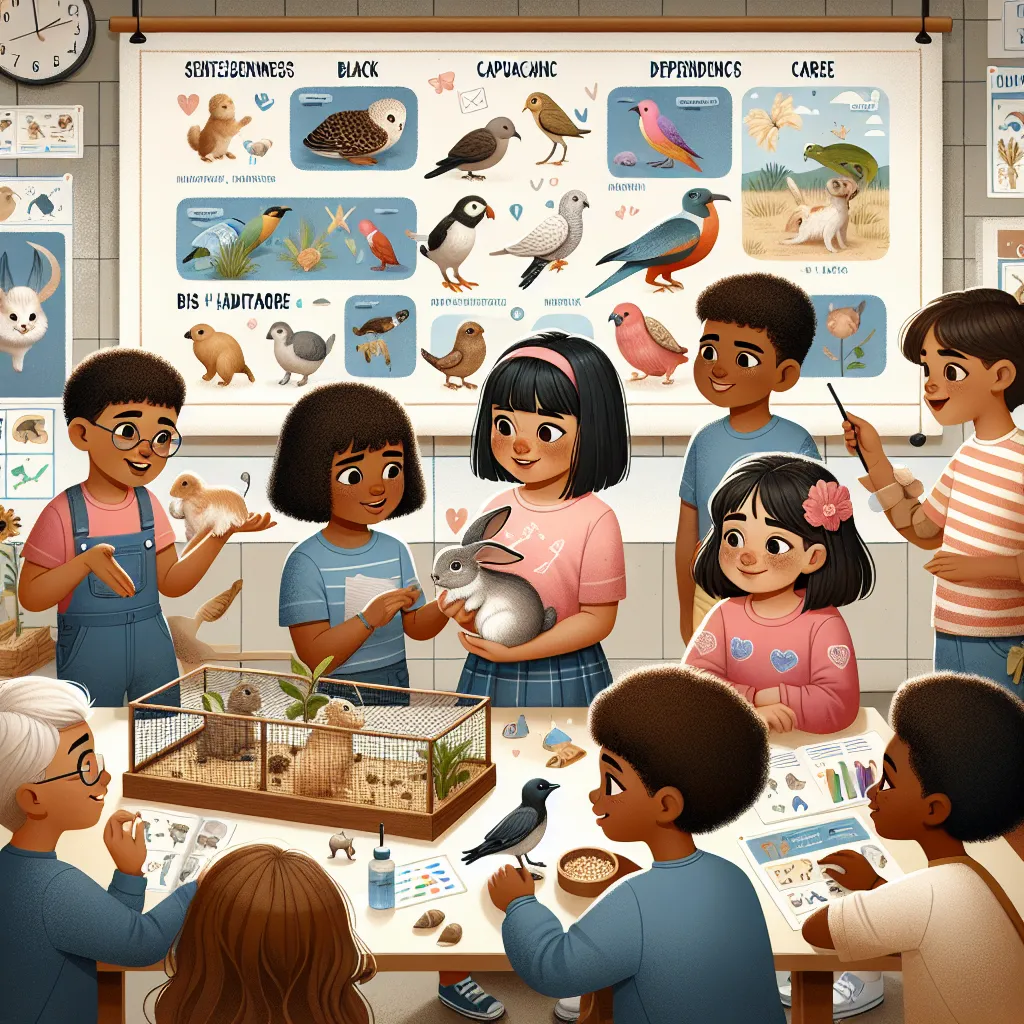
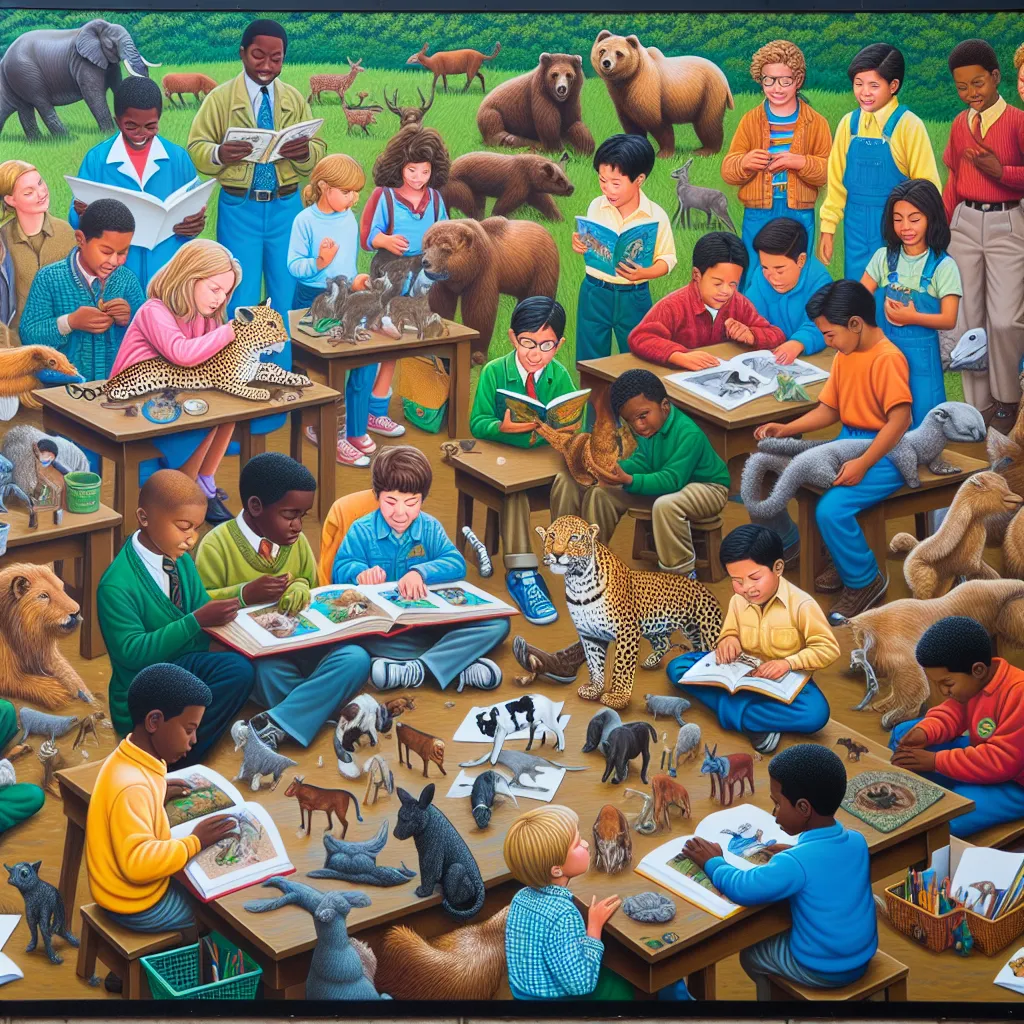
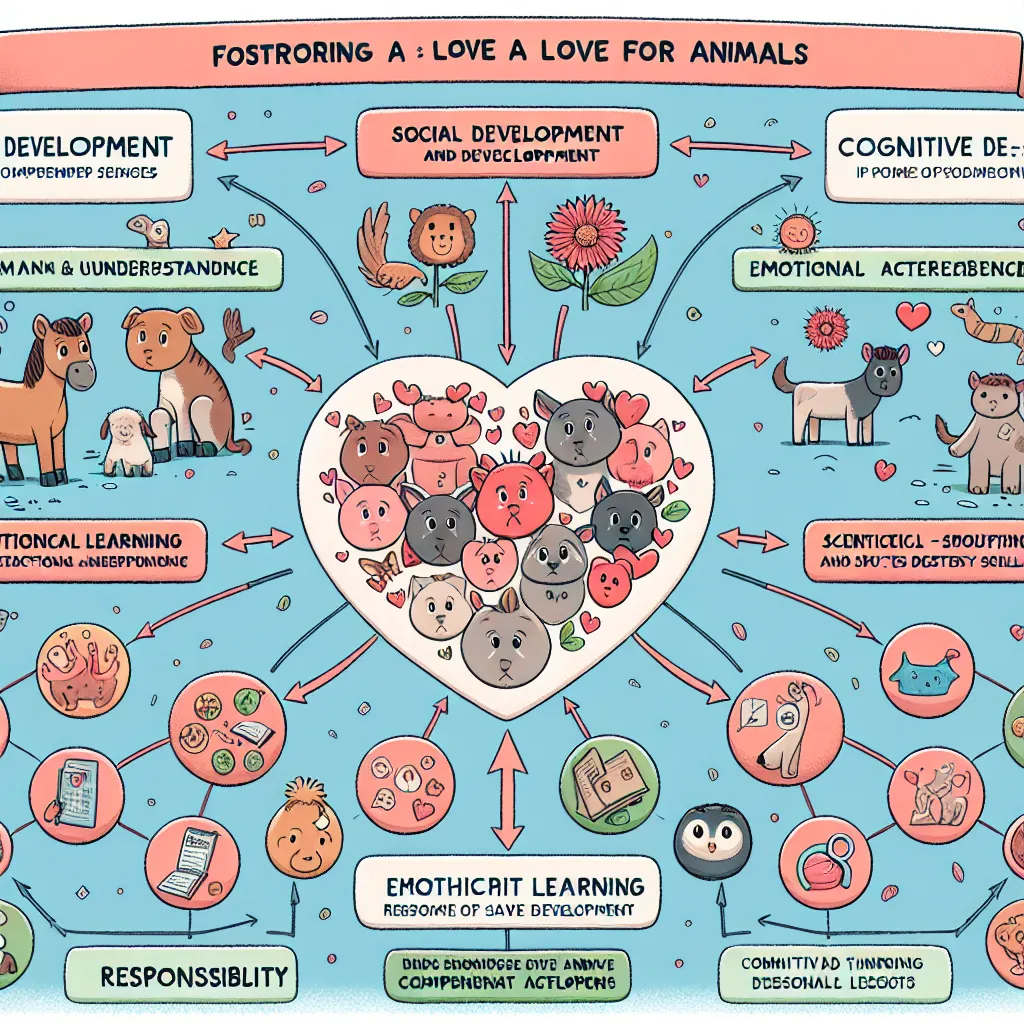

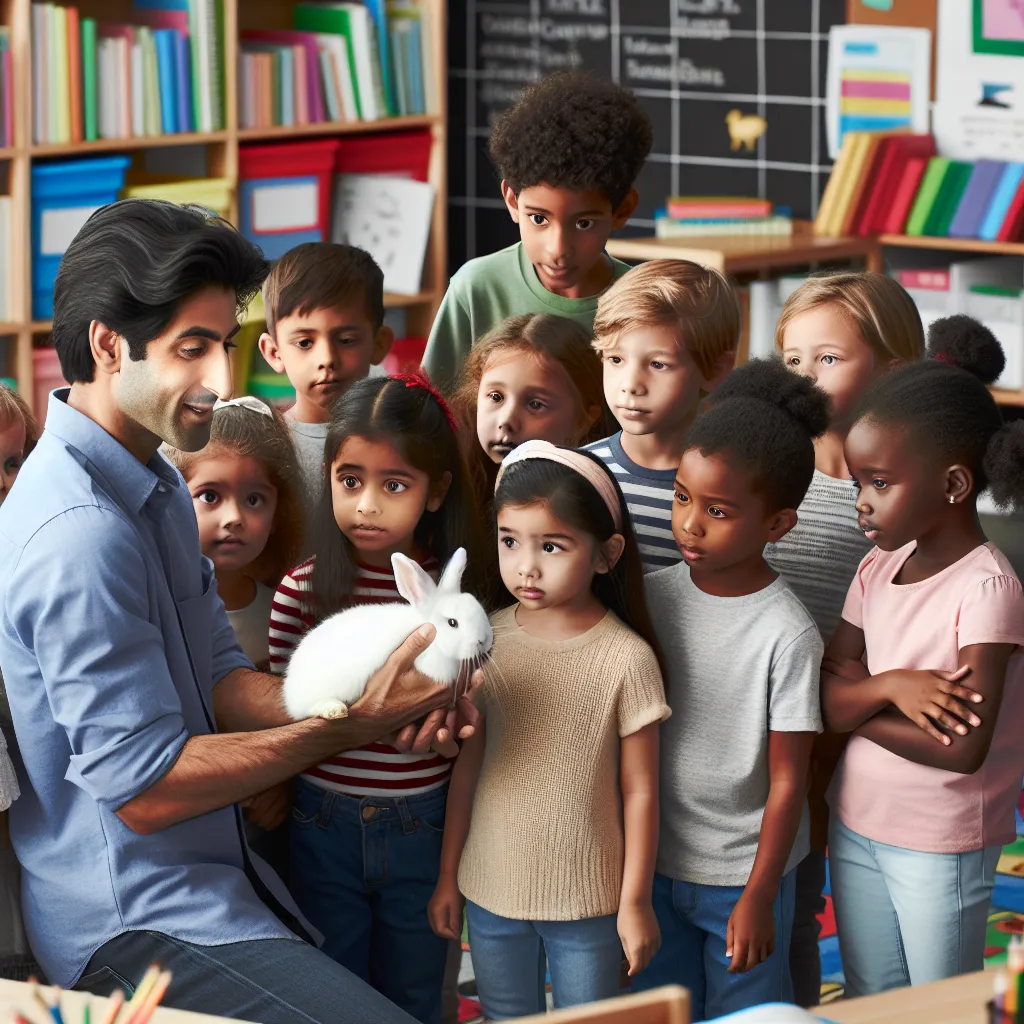
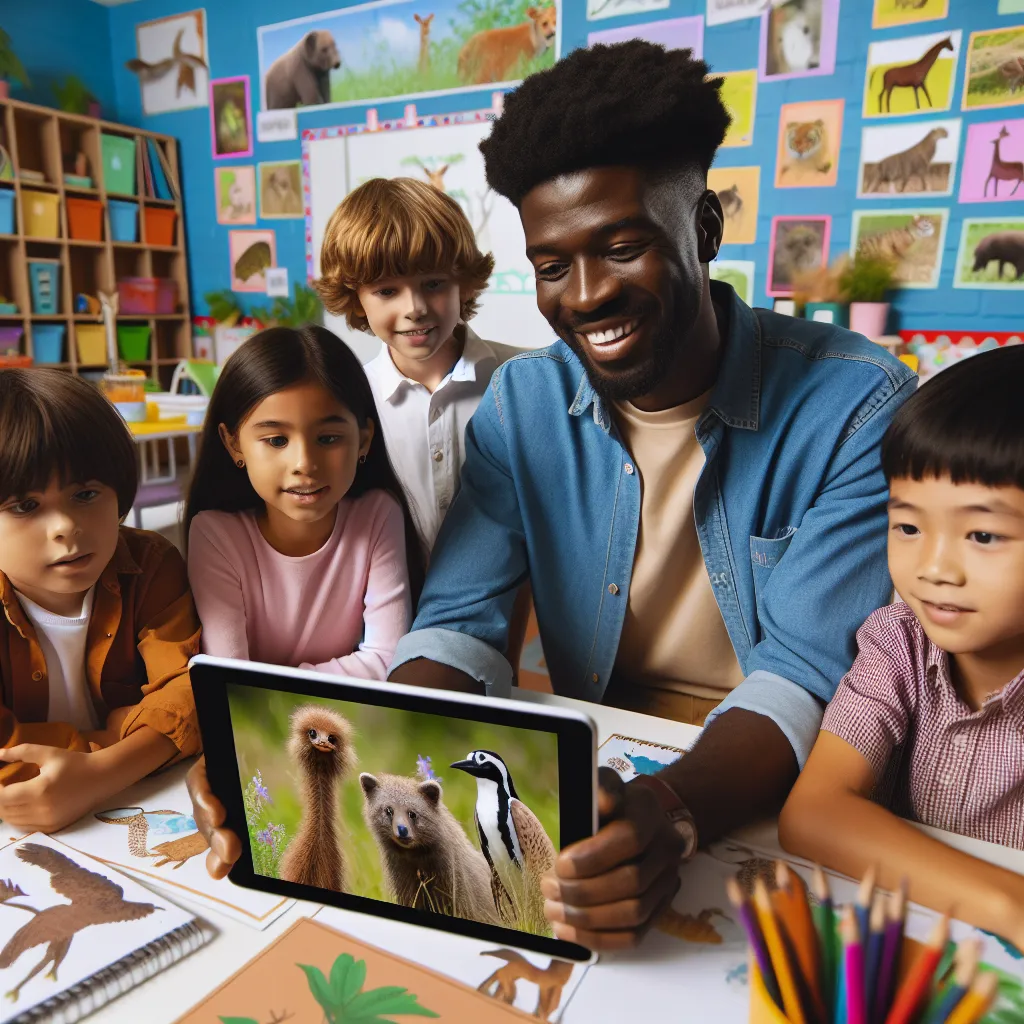

Post your own comment: